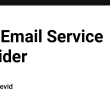Observables are a fundamental part of Angular and play a crucial role in handling asynchronous data. They provide a powerful and flexible way to manage events, HTTP requests, and other asynchronous operations. In this post, we’ll explore what Observables are, why they matter, and how to use them effectively in Angular applications.
🔍 What Are Observables?
Observables are a part of the RxJS (Reactive Extensions for JavaScript) library, which comes integrated with Angular. They represent a stream of data that can be observed over time. Think of them as a way to handle data that changes, such as user input, server responses, or real-time updates.
Key Characteristics of Observables:
- Asynchronous: Handle data as it arrives without blocking the main thread.
- Lazy Execution: Code runs only when subscribed to.
- Multiple Operators: Transform, filter, and combine streams of data.
- Unicast: Each subscribed observer owns an independent execution of the Observable.
⚡ Why Observables Matter in Angular
-
HTTP Requests: Angular’s
HttpClientreturns Observables when making API calls, enabling flexible handling of server responses. - Reactive Forms: Observables track form control changes and validate forms reactively.
-
Component Communication: Use
@Output()withEventEmitter, which is based on Observables, to communicate between parent and child components. - Real-Time Data: Handle WebSocket connections and real-time updates efficiently.
🛠️ How to Use Observables Effectively
1. Subscribing to Observables
The most common way to use Observables is by subscribing to them:
this.dataService.getData().subscribe(data => {
this.items = data;
});
2. Using Async Pipe
The async pipe in Angular automatically subscribes and unsubscribes from Observables, reducing memory leaks:
*ngIf="items$ | async as items">
*ngFor="let item of items">{{ item.name }} 




